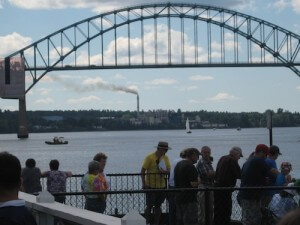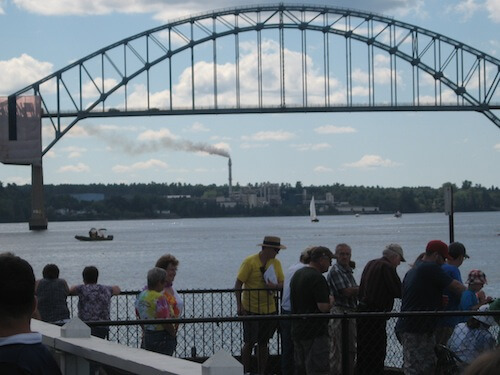
The province’s claim of air quality improvements in New Brunswick likely ring hollow for residents living in Saint John, Belledune or Miramichi (Telegraph-Journal, Oct. 18, 2013).
According to the province’s recently released air quality report, residents living in the neighbourhood closest to the oil refinery in Saint John, Champlain Heights, are exposed to levels of benzene and other volatile organic compounds (VOCs) that are three times higher than other neighbourhoods in Saint John and seven times higher than elsewhere in the province.
The province says the benzene levels residents are experiencing are below Swedish National Standards. The scientific community has long advocated for lowering this standard because benzene, and other VOCs, are highly toxic in very small concentrations. These compounds are known respiratory, developmental and neurological toxins and certain VOCs, like benzene, are known cancer-causing agents.
As for Belledune, the 2011 air quality supplementary report shows that residents are forced to endure twice the sulphur dioxide levels than residents in Saint John. If the same sulphur dioxide standards used in Saint John were applied to Belledune, the report would show that residents are chronically exposed to levels of sulphur dioxide that would be viewed as unacceptable to Saint John residents.
The air quality report does indicate that air quality in Miramichi has improved. However, the 2012 re-opening of the oriented-strand board mill will see those trends soon reversed. Tests done in this spring show the mill is releasing more than twice the amount of particulate matter from the main stack than allowed in the province’s Approval to Operate. New tests were performed in the summer but the results have not been made public.
In addition, the Quebec government recently put in place new air quality regulations for mills like the one in Miramichi. Those regulations, which are more strict than those in New Brunswick, call for VOCs not to exceed 100 kg/day. The mill in Miramichi releases 19.3 kg per hour or 463 kg/day.
People living in these and other communities where industrial activity and pollutant releases are high, take little comfort in the fact that pollution levels are below current standards. Most people know that those standards are out-of-date, in some cases decades old. Regulations and policy-making have not kept pace with scientific knowledge.
The true test of whether these air quality standards are adequate to protect public health would be for the province’s health department to undertake specific health studies in those neighbourhoods or communities where pollutant releases are high. When the health department did this for the Belledune area in 2005, it found that residents had higher mortality and cancer rates than residents in their Health Region and the rest of New Brunswick.

